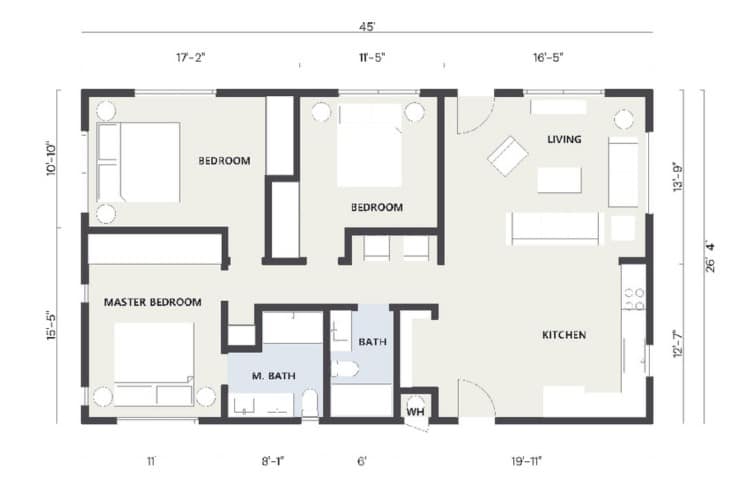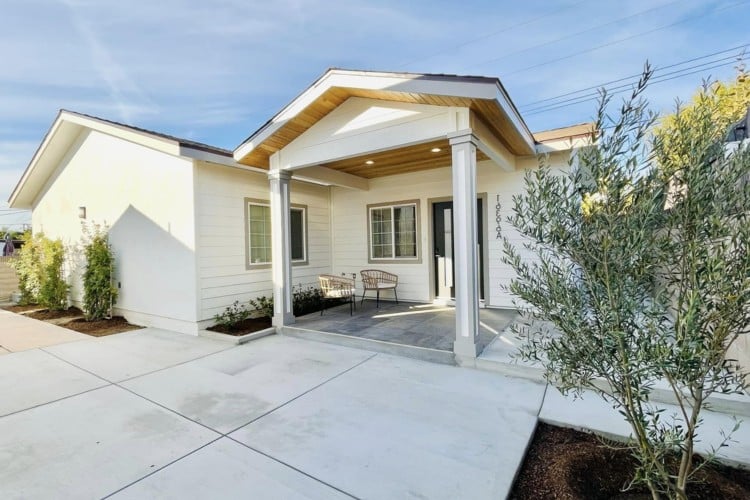12 Steps to Building an ADU: Your Comprehensive Guide
14 min read
Building an ADU is easier when you know what to expect. Our guide covers every step, from permits to final finishes, keeping your project on track.

How to Start an ADU in California: A Step-by-Step Guide
Are you considering adding an Accessory Dwelling Unit (ADU) to your property? This guide breaks down the process into 12 clear, simple steps. From figuring out what’s possible on your property to getting permits and building, we’re here to help you understand what to expect and how to make it happen.
Building an ADU can boost your property’s value and give you extra space to use or rent out, but getting started can feel overwhelming. That’s where this guide comes in—let’s cut through the confusion and give you a step-by-step look at how to bring your ADU project to life.
This guide covers every step in planning a detached unit, converting a garage, or adding a new space attached to your house. Let’s dive in and get you on track to build your desired ADU.
ADU Feasibility
Before you begin designing your ADU, assessing whether your property meets the basic requirements for building one is essential. Here’s how to evaluate your property’s feasibility:
- Site Size and Shape Start by checking your property’s lot size and layout and any unique features like slopes or irregular shapes. These factors impact where and how an ADU can fit on your property and will help you understand if your desired ADU type aligns with local zoning codes.
- Setbacks Setbacks refer to the required distance between structures and property lines. California law requires specific setbacks to ensure ADUs provide privacy and maintain adequate space between neighboring properties. Confirm that your planned ADU site meets these setback requirements before designing
- Access Every ADU must have adequate access to a public road or driveway, especially for emergency services. Consider how the ADU occupants will enter and exit the property without interfering with the main home’s layout or neighboring lots.

HOA Restrictions
If you live in a neighborhood with a Homeowners Association (HOA), you’ll want to consider any additional HOA requirements that could impact your ADU project. California’s AB 670 and Civil Code Section 4751 limit the power of HOAs to restrict ADU development, but some guidelines remain:
- AB 670 This law, effective as of 2020, prevents HOAs from placing unreasonable restrictions on building ADUs. While HOAs can still have some say, they cannot fully prohibit ADU construction on single-family residential lots.
- Civil Code Section 4751 This law defines “reasonable restrictions” by allowing HOAs to set basic guidelines for ADUs, such as design or aesthetic standards, as long as they don’t substantially hinder construction or increase costs.
Utility Connections
Utility mapping is crucial when planning your ADU. Assess where your water, electricity, and sewage lines are located, as each must be connected to the new unit. Knowing these locations early can save you time and money, especially if the ADU location requires additional line extensions. Utility connections are often one of the most significant costs in ADU projects, so careful planning is key.
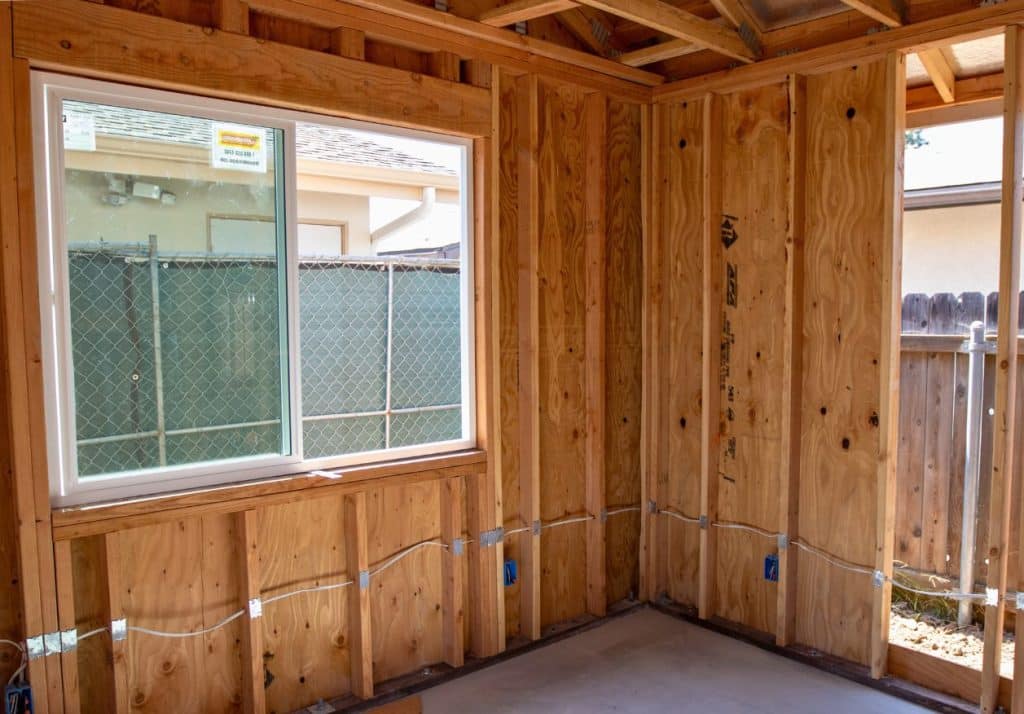
Choosing ADU Types
Finally, choose the type of ADU that best fits your property and budget. There are several options:
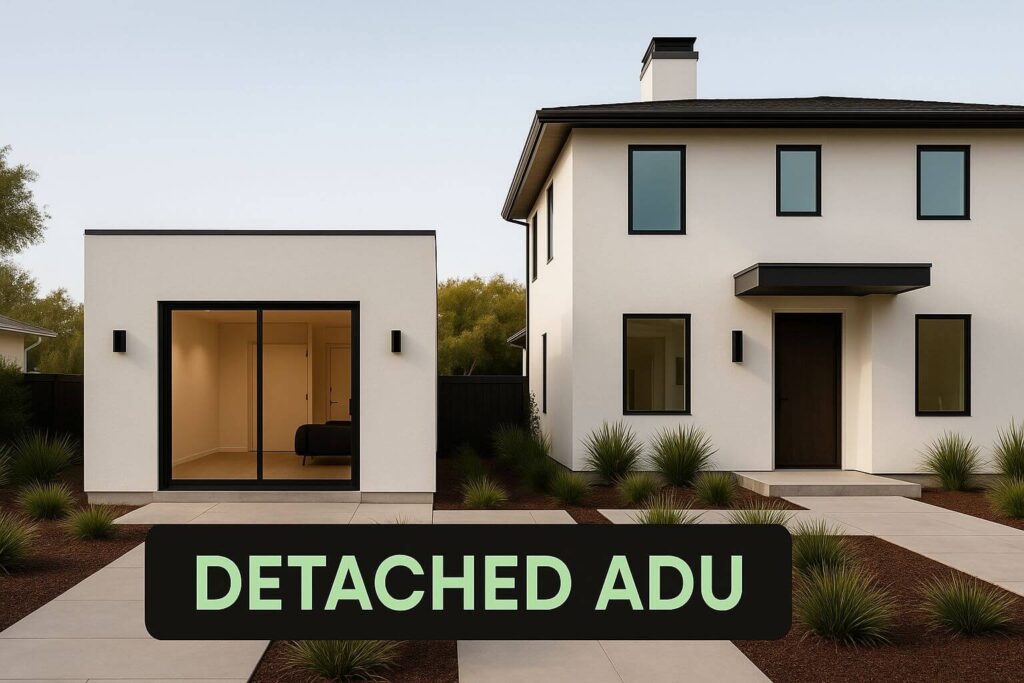
Opt for a freestanding unit to provide ultimate privacy and rental flexibility, while preserving your primary home’s aesthetic.
Detached ADU
A standalone unit separate from the main house, often resembling a small cottage or guesthouse.
- Purpose Suitable for generating rental income, housing extended family, or serving as a guesthouse.
- ROI While initial costs are high, the potential for substantial rental income can lead to a favorable ROI over time.
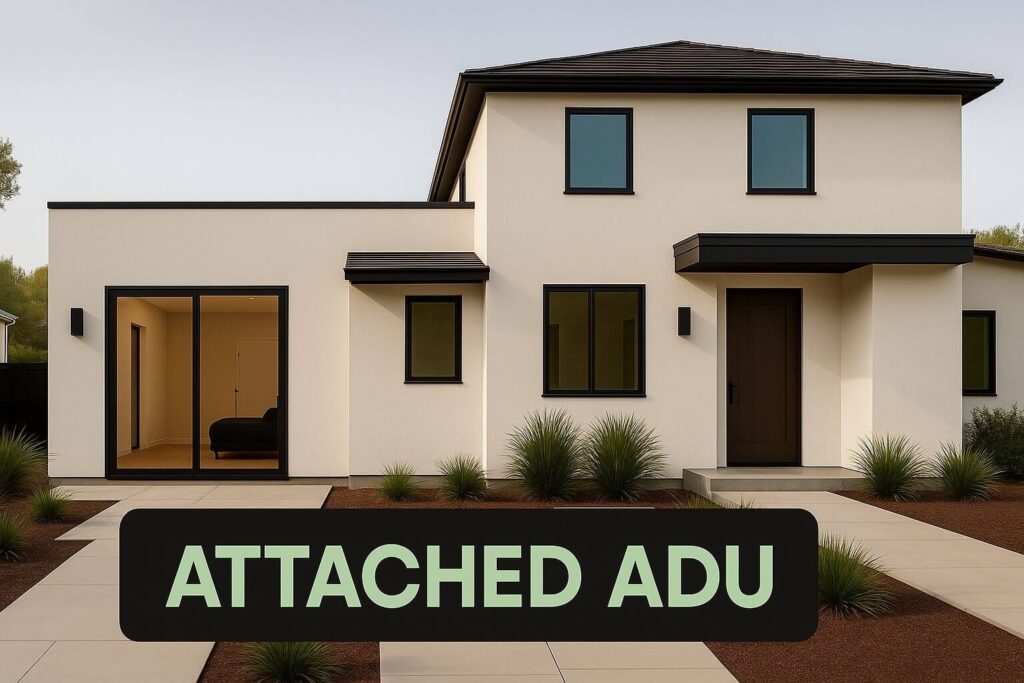
Seamlessly integrate an ADU into your main home to reduce construction costs and simplify utility connections.
Attached ADU
An extension built onto the primary residence, sharing a wall or roofline.
- Purpose Ideal for accommodating family members or generating rental income with moderate investment.
- ROI Moderate construction costs combined with rental income can result in a reasonable ROI.
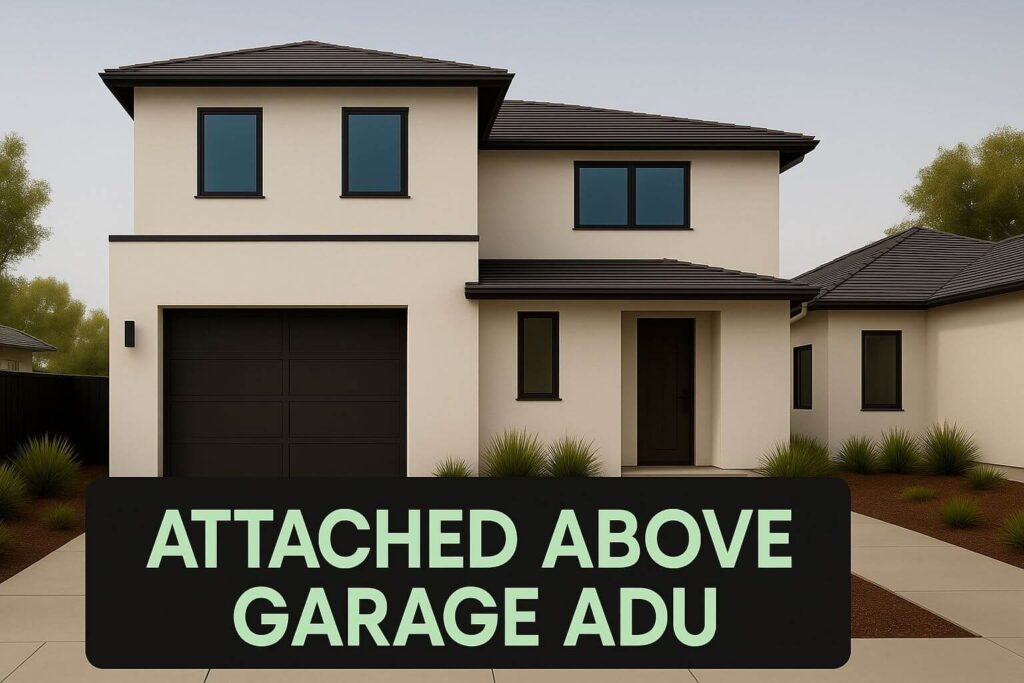
Leverage vertical space by placing living quarters above your garage—ideal for maximizing square footage without expanding the footprint.
Attached (Above Garage) ADU
A unit constructed above an existing or new garage, utilizing vertical space.
- Purpose Suitable for rental income or housing family members, especially in urban areas with limited space.
- ROI Moderate construction costs and potential rental income can lead to a favorable ROI.
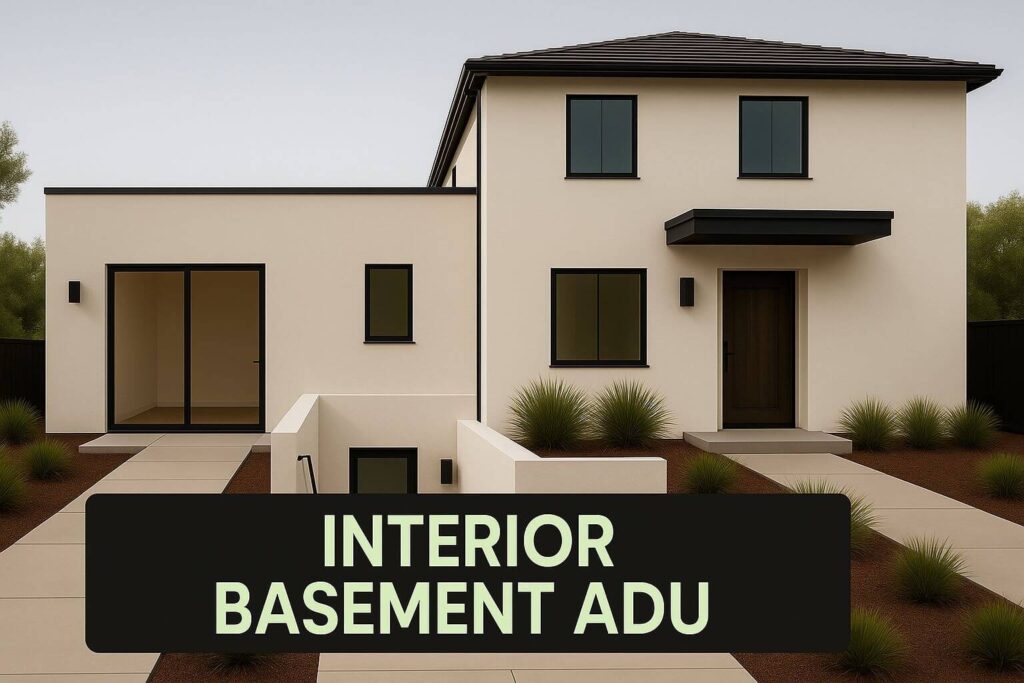
Prioritize egress windows and moisture control when converting a basement into livable space to meet code and ensure comfort.
Interior (Basement) ADU
Conversion of an existing basement into a separate living unit.
- Purpose Ideal for rental income or as a living space for family members.
- ROI Low construction costs and steady rental income can result in a high ROI.

Upgrade insulation and optimize layout flow when transforming a garage to maintain energy efficiency and usability.
Interior (Converted Garage) ADU
Transformation of an existing garage into a livable unit.
- Purpose Suitable for rental income, guest accommodations, or housing family members.
- ROI Low conversion costs and potential rental income can lead to a favorable ROI.
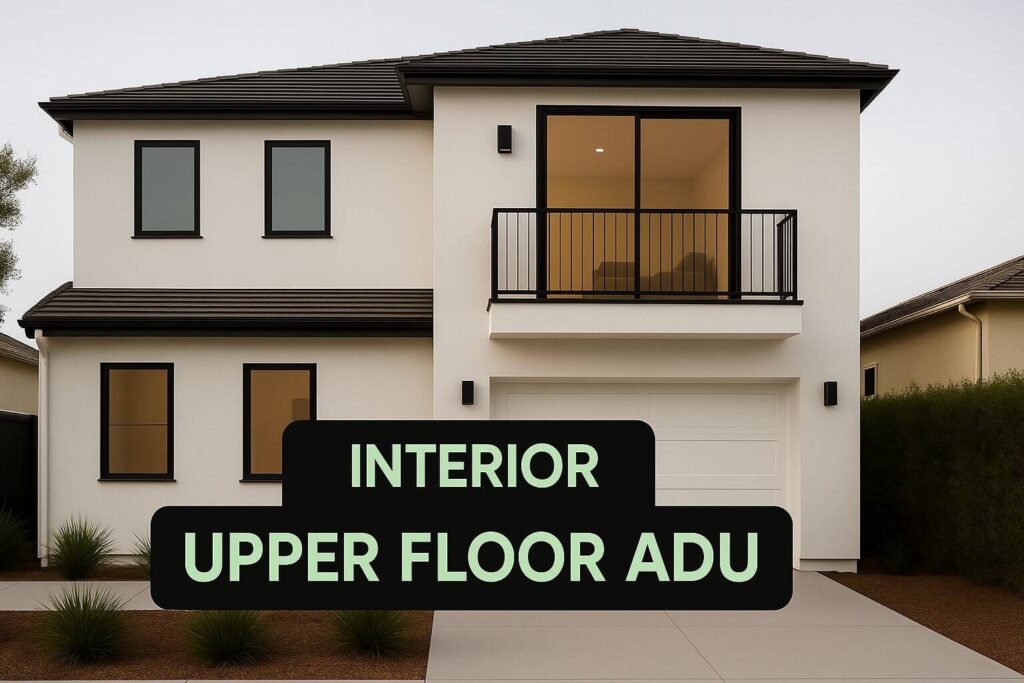
Evaluate load-bearing walls and plan stair access early to streamline permitting and avoid structural surprises.
Interior (Upper Floor) ADU
Conversion of an upper floor or attic space into a separate living unit.
- Purpose Ideal for rental income, guest accommodations, or housing family members.
- ROI Moderate construction costs and potential rental income can result in a reasonable ROI.
Budgeting for Your ADU Project
Setting a realistic budget is essential for a successful ADU project. Here’s a simple breakdown to help you get started:
Understand the Costs
Building an ADU involves multiple location, design, and materials costs. Here are the primary expenses:
- Construction Costs ADUs generally cost between $300 and $450 per square foot. The total construction cost will depend on material quality, design complexity, and local labor rates.
- Permits and Fees Permitting costs can range from $5,000 to $10,000, based on city regulations and the project scope. Researching these fees early on helps you avoid surprises down the line.
- Utility Upgrades Extending utilities—like water, electricity, and sewer lines—to the ADU can add significant costs. If your existing systems need upgrading, factor in these potential extra expenses.
Financing Options
There are several financing routes available to support your ADU project:
- Home Equity Loans Many homeowners tap into their home’s equity to fund ADU construction, using these loans as a cost-effective option.
- ADU Loans Specialized ADU loans are gaining popularity. Some lenders now offer financing products explicitly tailored for ADU projects, which can help streamline the funding process.
- Local Grants and Incentives California cities sometimes offer grants or financial incentives for ADUs, primarily if the units will serve as affordable housing. Check with your local housing department for available programs.
Managing Unexpected Expenses
Unexpected costs are typical in construction projects, so it’s wise to prepare for them:
- Set Aside a Contingency Fund Reserve about 10-15% of your budget for unexpected costs. This fund can help cover last-minute changes or additional expenses that may arise.
- Account for Upgrades and Quality Materials If you plan on using high-end finishes or custom designs, these choices can increase your budget. Be sure to factor in these upgrades if they’re part of your vision for the ADU.
- Quick Tip Get estimates from multiple contractors to compare costs and find the best fit for your budget.
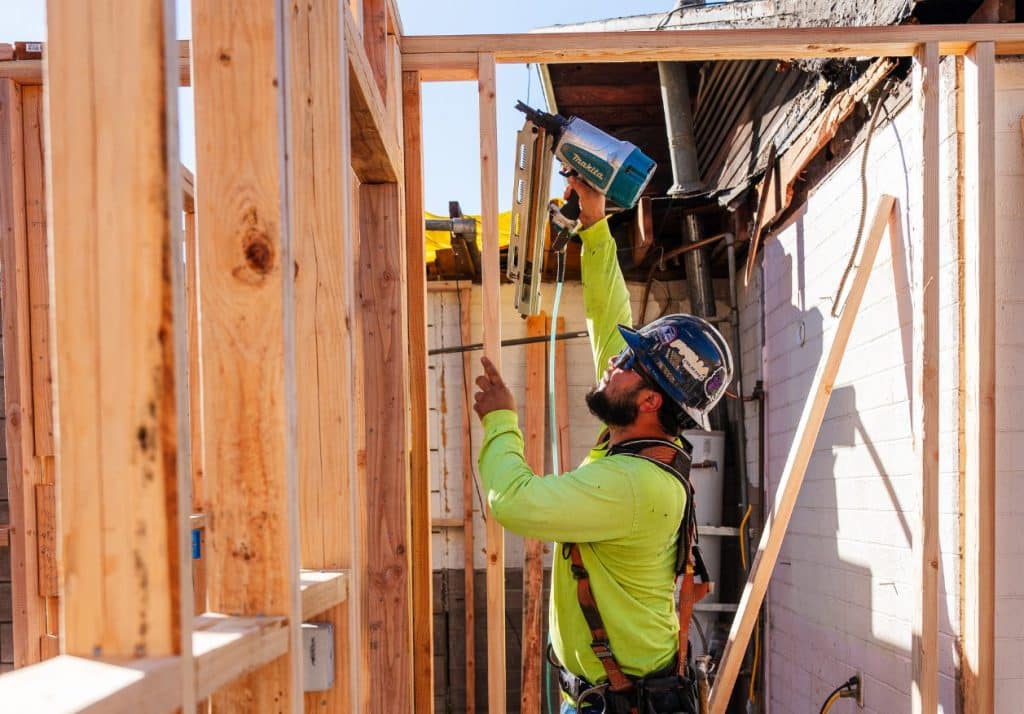
Design and Planning
The design and planning stage is when your ADU concept truly begins to take shape. In this phase, you’ll choose the layout, style, and materials to bring your vision to life while balancing practicality and budget.
Hire an Architect or Designer for Custom Plans
An experienced architect or designer can make a big difference in your ADU project. Here’s how they can help:
- Maximize Space Architects can create a layout that feels open and functional, ensuring your ADU is both practical and comfortable.
- Stay Within Budget They can suggest cost-effective materials and design solutions, helping you achieve your goals without breaking the bank.
- Meet Local Regulations ADUs have specific zoning and permitting requirements. A professional can ensure your design meets all local building codes and regulations, saving you time and potential setbacks.
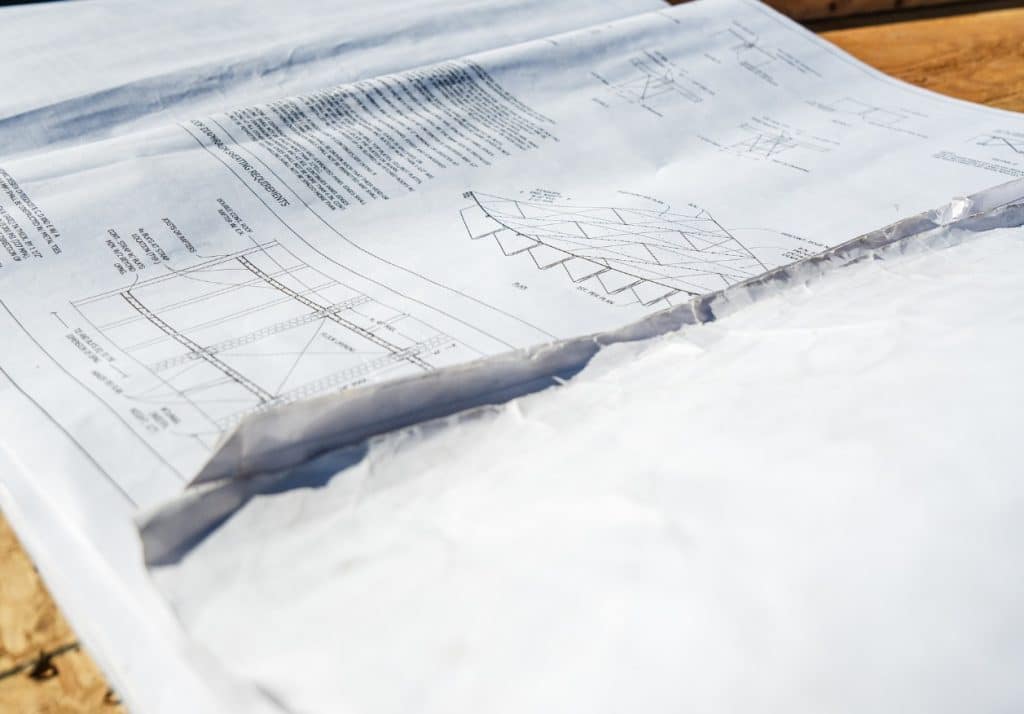
Visualize Your ADU with 3D Modeling Tools
To get a better feel for your ADU design, consider using 3D modeling tools. Better Place’s ADU design tool allows you to experiment with layouts and styles, giving you a clear visual of the final product. Virtual walkthroughs help you experience your ADU design firsthand, making it easier to make informed choices about the layout and finishes.
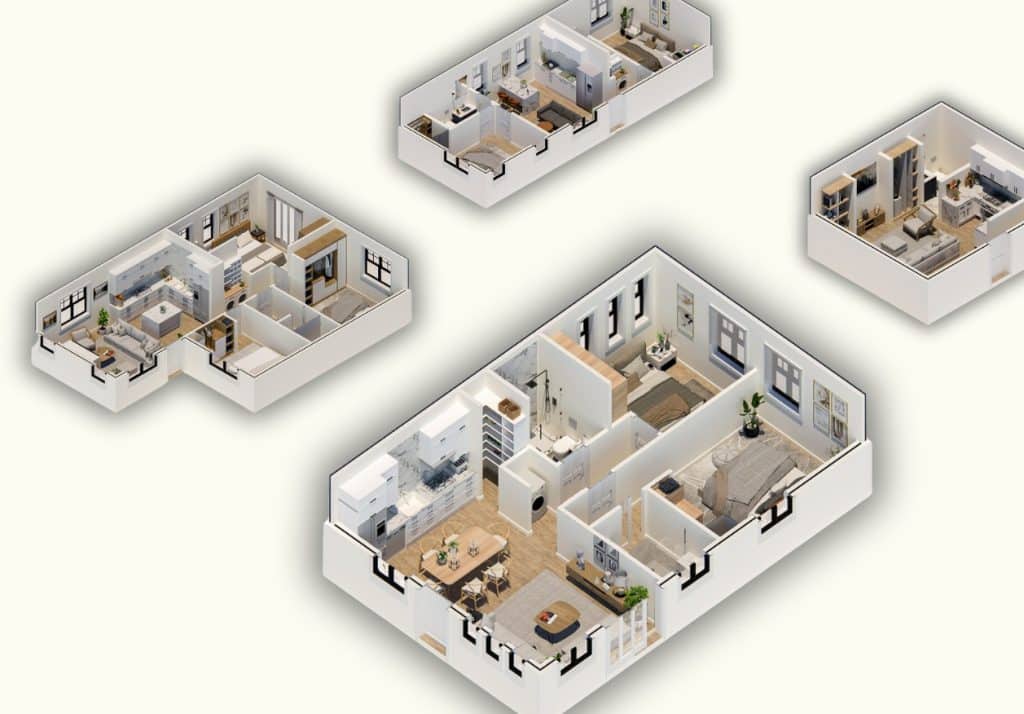
Align with Budget and Local Standards
As you plan, make sure your design aligns with both your budget and local regulations. Also, keep in mind California Title 24 energy standards, which set specific guidelines for energy efficiency in residential construction.
Obtaining and Processing Permits
Getting the right permits is crucial to avoid fines and make sure your ADU is built safely and up to code. This phase can take time, so let’s break down the steps to keep things moving.
Key Permit Steps
Understand Local Regulations Every city has its own zoning laws and building codes for ADUs. Know the rules for things like setbacks, height limits, and parking requirements specific to your area. These guidelines help determine what type of ADU you’re allowed to build.
- Get Your Documents Ready Prepare all necessary documents, including site plans, floor plans, and any architectural drawings. Some areas may also require energy compliance documents and other environmental forms.
- Submit Your Permit Application Take your documents to your local permitting office. You may need a general building permit along with specific permits for plumbing, electrical, and mechanical work.
- Make Adjustments If Needed Sometimes, the city will come back with required changes or requests for additional information. Be flexible and ready to adjust your plans to get approved faster.
- Final Approval Once the plans meet all requirements, you’ll receive the permits needed to start construction. With permits in hand, you’re officially clear to begin building your ADU.

Tips for a Smoother Permitting Process
- Connect with Local Officials Early Reach out to city planners or building inspectors to get an idea of what’s required. Early conversations can help prevent roadblocks later.
- Hire Experts An experienced architect or permit expediter can simplify the process and help ensure you meet all regulations.
- Stay Flexible Be prepared to make minor adjustments to your plans if requested by city officials. It’s all about keeping the process moving smoothly.
- Consider a One-Stop Solution Some design-build firms handle the entire permitting process for you, reducing stress and helping you avoid costly delays.
Site Work for ADU Construction
With your permits in hand, it’s time to prepare the site. Site work includes everything needed to get the ground ready for building. This phase is all about setting up a clean, safe, and functional work area, so the rest of the build can go smoothly.
Steps to Prepare the Site
- Clear the Area Remove any obstacles like old sheds, plants, or debris from the construction area. If you have existing structures on the site that need to go, get them cleared out now.
- Level the Ground Make sure the ground is even and stable for the ADU’s foundation. Depending on your property, this might include grading the site or adding fill dirt to create a level surface.
- Set Up Utility Connections Plan for water, electricity, and sewer connections early. This includes mapping where the lines will run and any trenching required to connect the ADU to main utilities.
- Gather Materials and Equipment Make sure all necessary tools, materials, and workforce are on-site and ready. Having everything prepped reduces downtime and keeps the project on track.
- Inspect Soil and Drainage Ensure the soil is stable enough to support the ADU and won’t be affected by water runoff. Addressing drainage issues now can prevent foundation problems later.
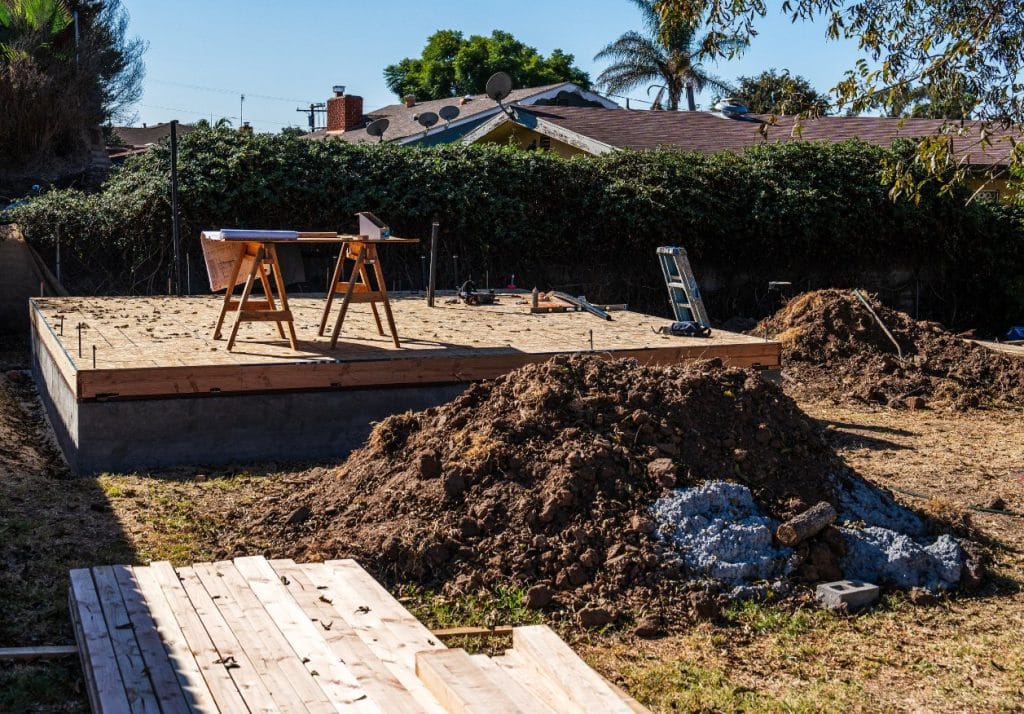
Why Site Prep Matters
Getting the site work right from the start helps prevent delays and costly fixes down the line. Proper preparation means a smoother construction process and a stronger, more durable ADU in the long run.
Trenching & Foundation
Once the site is prepped, the next focus is on trenching and laying a solid foundation. This phase is essential because a strong foundation sets up your ADU to be stable and secure for years to come.
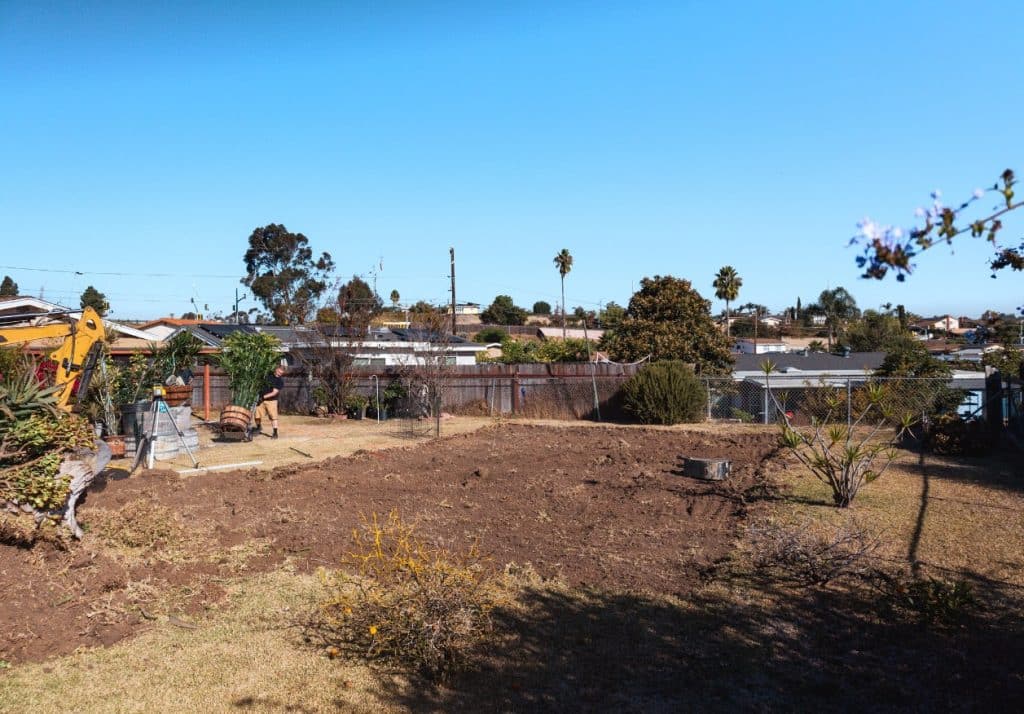
Steps for Trenching & Foundation
Trenching for Utilities Trenching involves digging narrow pathways in the ground for utility lines like water, electricity, and sewer. This ensures the ADU has all essential connections without disturbing the foundation later on.
- Choosing the Foundation Type The type of foundation you use depends on your property and ADU type. Here are the common options:
- Slab-on-Grade A popular choice for level ground; it involves pouring a concrete slab directly onto the ground, providing a stable, low-cost option.
- Raised Foundation Good for properties with slight slopes, this option includes a crawl space for easy access to utilities.
- Basement Foundation Ideal if you want extra storage or livable space beneath the ADU, though it’s more costly and complex to install.
- Pouring the Foundation After choosing the type, the concrete is poured and leveled. The foundation is then allowed to cure, giving it time to harden and settle.
This step ensures that your ADU’s “base” is ready to support walls, floors, and everything else that follows.
Why Foundation Work is Important
The foundation is the backbone of the ADU, handling the weight of the structure and preventing issues like shifting or settling over time. A solid foundation means fewer issues down the road and a safer, longer-lasting ADU.
Framing
With the foundation in place, it’s time to move on to framing—where your ADU starts to take shape. Framing is the skeleton of your structure, supporting walls, floors, and the roof, giving your ADU its shape and stability.
Steps for Framing
- Framing the Walls Builders start with the walls, using wood or steel beams to create a sturdy framework. They’ll follow the approved blueprints to ensure each wall is positioned accurately. At this stage, doorways and window openings are framed as well, establishing the layout.
- Installing the Roof Framing Once the walls are up, it’s time to frame the roof. Different roofing options (like flat, pitched, or sloped) might be chosen depending on your design, local weather, and budget. Roof framing is essential for ensuring the structure can withstand rain, wind, and other elements.
- Setting Up the Subfloor In cases where a raised foundation or crawl space is used, the subfloor framing goes in to provide a solid base for flooring. This helps with insulation, prevents moisture issues, and gives your ADU an extra layer of protection.
- Sheathing for Extra Stability Sheathing (usually plywood or another material) is added to the outside of the framing to make the structure even stronger and prepare for exterior finishes. This step keeps the walls aligned, offers more stability, and helps keep the elements out.
Why Framing is Key
Framing sets up the basic structure, making it essential for the durability and stability of your ADU. Done right, it gives the ADU the shape, support, and insulation necessary for a comfortable living space.
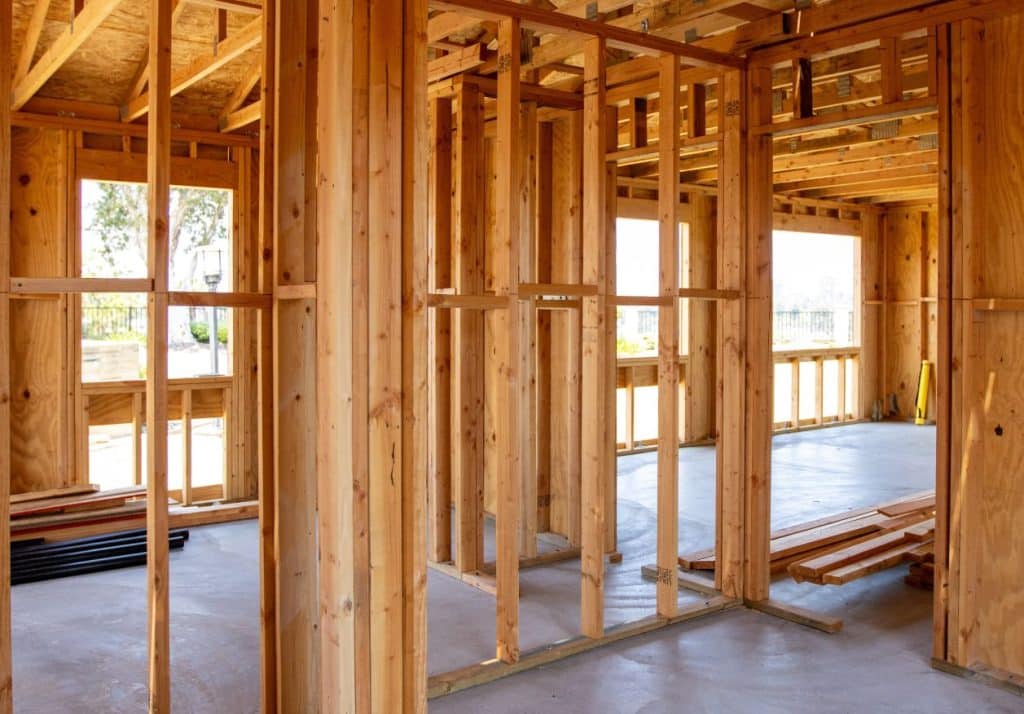
Rough Mechanical, Electrical, and Plumbing (MEP)
With framing done, it’s time to install the core systems—mechanical, electrical, and plumbing (MEP). This step sets up the essentials your ADU will need to function comfortably and efficiently. Here’s what each involves:
What Happens During MEP Installation
- Mechanical This covers your heating, ventilation, and air conditioning (HVAC) systems. Contractors will install ductwork, if needed, or place units like mini-splits that heat and cool small spaces effectively. Proper ventilation is key, as it keeps air fresh and helps control indoor temperatures.
- Electrical Next up is the electrical wiring, which powers lighting, outlets, appliances, and anything else that needs electricity. Electricians will run wires through the framed walls, connect to the electrical panel, and install boxes where outlets and switches will go.
- Plumbing Plumbing lines for water, waste, and gas (if needed) are set up at this stage. This includes lines for your kitchen, bathroom, laundry area, and water heater. Installing plumbing now ensures everything can be connected efficiently when fixtures and appliances go in.
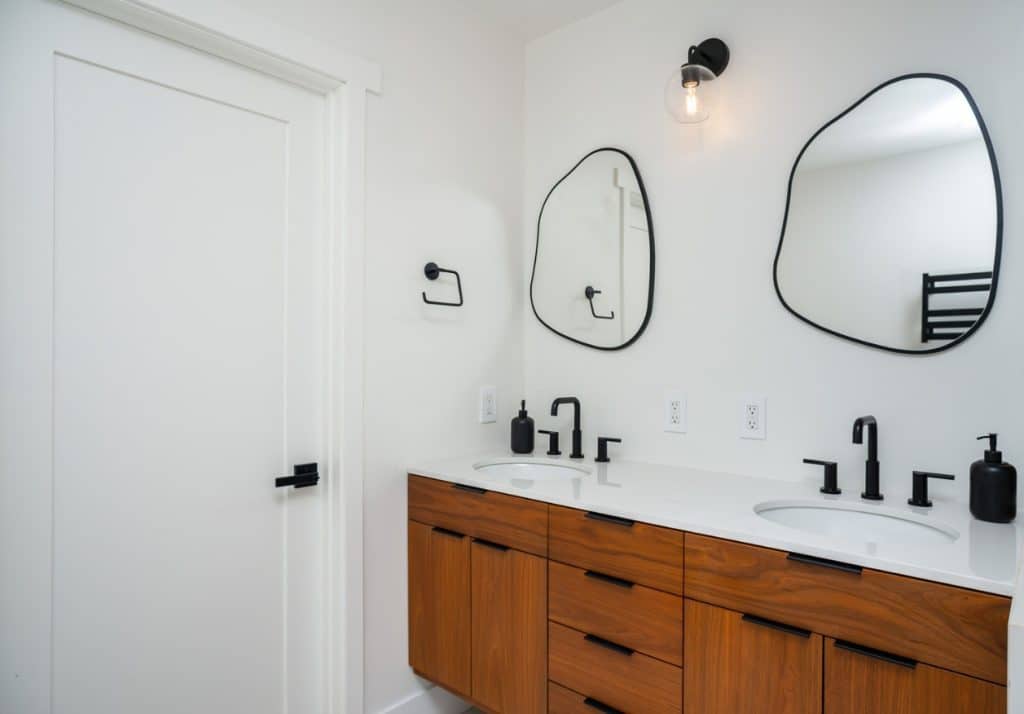
Key Points for a Successful MEP Phase
- Code Compliance MEP systems have to meet specific codes and regulations for safety and efficiency, so experienced contractors are a must here.
- System Testing Before walls are closed up, each system is tested to ensure everything is working correctly.
- Energy Efficiency Choosing efficient HVAC and lighting options can lower long-term utility costs, a big plus if you plan to rent out the ADU.
MEP installation is essential to turning your framed structure into a livable home. With reliable heating, cooling, water, and power, your ADU will be set up for comfort and convenience.
Exterior Finishes
Once MEP is complete, it’s time to wrap up the outside of your ADU. The exterior finishes protect the building from the elements and add curb appeal. These choices also set the tone for your ADU’s style, so let’s make it count.
Steps to a Strong, Stylish Exterior
- Roofing A solid, weather-resistant roof is crucial. Depending on your climate and budget, consider materials like asphalt shingles, metal, or tile. Each option has its own lifespan and maintenance needs, so pick what works best for your area and budget.
- Siding Siding is both the protective layer and the “face” of your ADU. Common materials include vinyl, wood, fiber cement, and stucco. Choose something durable and that blends well with your main home. Fiber cement is popular for its balance of strength and style, while wood adds a natural look but needs more upkeep.
- Windows and Doors Energy-efficient windows and doors are must-haves. They keep your space comfortable, reduce energy costs, and provide noise insulation. If possible, install double-pane or low-emissivity (low-e) glass for better energy efficiency.
- Paint and Trim Paint or trim adds the final touch, pulling the look together. This is where you can get creative and make the ADU stand out or blend in. Use exterior-grade paint for durability, and coordinate with your main house’s colors for a cohesive look.

Why Exterior Finishes Matter
Exterior finishes aren’t just about looks—they also impact maintenance and the lifespan of your ADU. Durable, low-maintenance materials will save you time and money in the long run. Quality finishes also help to protect against weather damage, ensuring your ADU stays in good shape for years to come.
The exterior is what sets the first impression, so choose materials that make your ADU inviting and durable.
Insulation & Drywall
Now we’re moving inside, adding comfort and soundproofing to your ADU. Insulation and drywall play a major role in keeping temperatures steady, dampening noise, and making sure the space is ready for final finishes.
Steps to Insulating and Drywalling Your ADU
- Choosing Insulation Insulation makes the ADU energy-efficient by keeping heat in during winter and out during summer. Options like fiberglass batts, spray foam, and blown-in insulation are common. Each type has different insulation values (or R-values), so choose based on your climate and energy goals. For example, spray foam costs more but offers better sealing for extreme temperatures.
- Insulate Key Areas Focus on the walls, ceiling, and floors. Make sure any gaps or spaces are sealed tightly to prevent drafts. Good insulation also minimizes noise transfer—helpful for ADUs in busy neighborhoods or close to the main house.
- Drywall Installation Once insulated, it’s time to cover the walls and ceiling with drywall. This provides a smooth, finished surface ready for painting. Drywalling involves attaching sheets to the framing, taping the seams, and applying joint compound for a seamless look.
- Finishing Touches After installation, the drywall is sanded and primed, getting it ready for paint or wallpaper. If you’re looking for a little extra style, you can add texture to the drywall to give the walls more depth.
Why Insulation & Drywall Matter
Good insulation saves on energy bills and makes the space more comfortable year-round. Drywall, on the other hand, creates a clean, polished look and makes your ADU feel like home. This step also ensures your ADU is one step closer to being ready for interior finishes and move-in day.
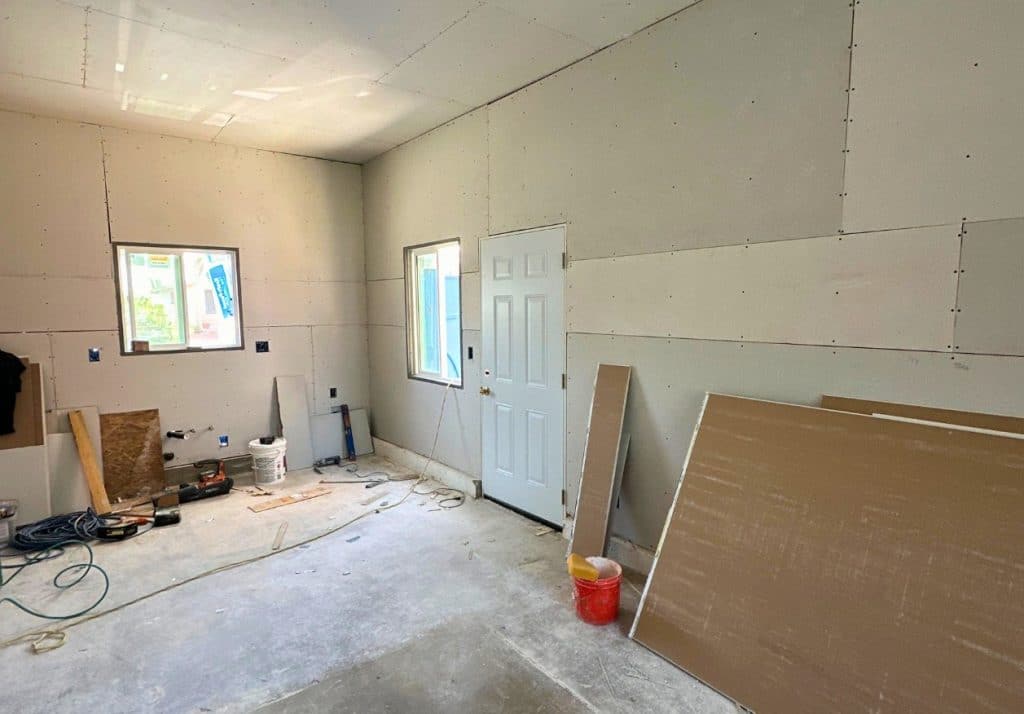
Interior Finishes
This is where your ADU really comes to life. Interior finishes include flooring, cabinetry, fixtures, and all the details that make the space feel complete. These choices impact both style and functionality, so it’s worth investing time here to create a comfortable, durable, and appealing space.
Key Steps for Interior Finishes
- Choose Flooring Flooring sets the tone of the room and should balance style with durability. Options like hardwood, vinyl, or tile are common picks for ADUs. If you want a warm, cozy feel, go for wood or luxury vinyl plank. For easy maintenance, tile in kitchens and bathrooms is a great choice. Choose materials that are durable but also align with the overall look you want.
- Cabinetry and Countertops Cabinets and counters are the backbone of your kitchen and bathroom. Opt for cabinets that are both stylish and functional. If budget allows, solid wood or plywood cabinets can withstand heavy use. For countertops, quartz offers a sleek, modern look and is easier to maintain than granite or marble.
- Fixtures and Appliances Now comes the detail work. Install faucets, lighting, and appliances that suit the ADU’s size and layout. Compact appliances work well for maximizing space, and energy-efficient options can save money in the long run. Think about practical details like over-the-range microwaves to save countertop space or stackable washer-dryer units for smaller ADUs.
- Paint and Final Touches The right paint color can make your ADU feel spacious and welcoming. Light, neutral colors open up smaller spaces, while accent walls can add personality. Once walls are painted, add finishing touches like baseboards, door trims, and other details to complete the space.
Why Interior Finishes Matter
Interior finishes are the details that make an ADU feel like home. They set the atmosphere, reflect your personal style, and make the space functional. Well-chosen finishes can also boost the property’s appeal if you ever plan to rent it out.
Final Inspection and Move-In
Congratulations, your ADU is almost ready! Before it can officially be used as a living space, there’s one last step: the final inspection. This ensures that everything meets local building codes and safety standards, giving you peace of mind (and legal approval) that your ADU is good to go.
Steps to Final Inspection
- Schedule the Inspection After construction wraps up, schedule a final inspection with your local building department. They’ll check everything from structural work to electrical and plumbing systems.
- Prepare for Inspection Day Make sure the ADU is accessible, clean, and that all systems (like lights, water, and HVAC) are working. Have all relevant paperwork and permits handy in case the inspector requests them.
- Pass or Address Any Issues If any issues come up during inspection, don’t sweat it. The inspector will let you know what needs fixing, and after those adjustments, you can schedule a re-inspection. Once everything passes, you’ll receive a Certificate of Occupancy, the official sign-off that your ADU is safe and compliant.
Move-In Ready
With the final inspection complete, your ADU is officially ready for occupancy. Now it’s time to add those personal touches, bring in furniture, and make the space your own (or list it for rent!). From here, your ADU can serve as a cozy guesthouse, a rental for passive income, or extra space for family.
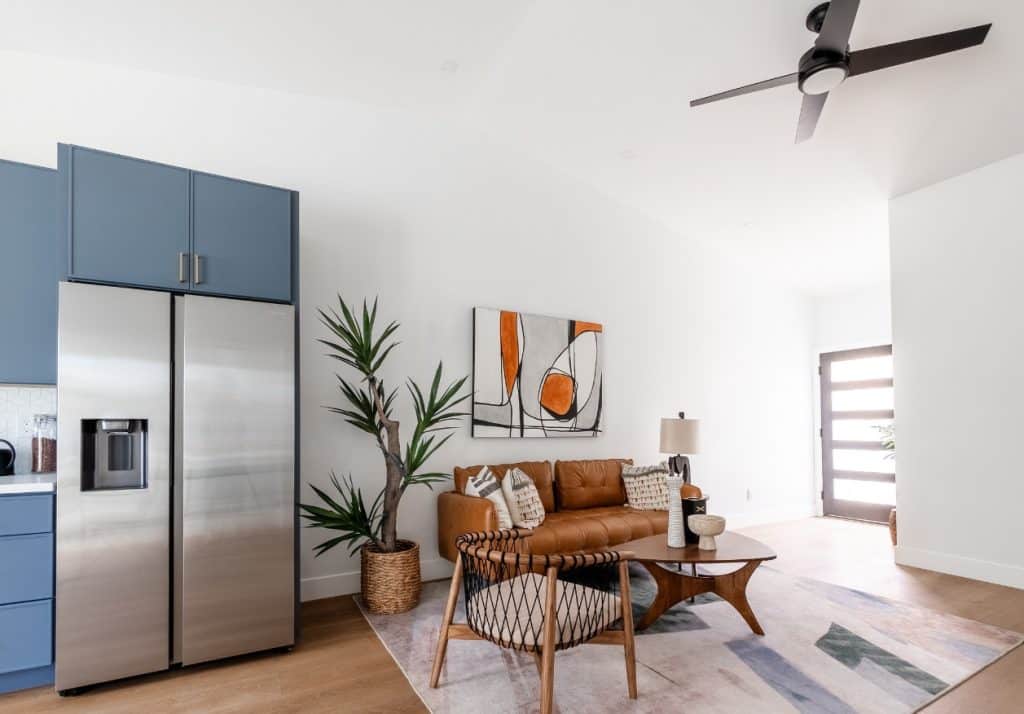
How Long Does It Take to Build an ADU?
Building an ADU is a multi-phase process, and knowing the timeline can help set realistic expectations. Let’s break down each phase, the potential delays, and tips to keep things moving smoothly.
Typical Timeline Breakdown
On average, building an ADU takes around 8-12 months from start to finish. Here’s how that time typically breaks down:
- Design Phase (1-2 months) Creating custom plans and finalizing the design.
- Permitting Phase (3-4 months) Submitting plans, undergoing city reviews, and getting the necessary permits.
- Construction Phase (4-6 months) Building the ADU, including site preparation, foundation, framing, utilities, and interior finishes.
Each of these stages can vary depending on your ADU’s complexity and local regulations, but this timeline provides a good general guide.
Factors Impacting the Timeline
Several factors can affect how long it takes to complete an ADU, including:
- Permit Delays Delays often occur if revisions are needed or city planning offices are backlogged.
- Weather Conditions Rain, wind, and extreme temperatures can slow construction, especially during site preparation and framing.
- Contractor Availability ADU projects are popular, so skilled contractors may have full schedules, causing potential delays.
Understanding these variables can help you anticipate possible slowdowns and avoid surprises along the way.
Ways to Expedite the Process
To keep your ADU project on track, consider these strategies:
- Streamline Approvals Start the permitting process early and ensure all documentation is accurate. Working with an experienced ADU contractor can help you navigate local requirements.
- Fast-Track Construction Opt for a contractor with ADU experience who can efficiently coordinate all phases, from foundation work to finishing touches.
- Take Advantage of AB 2221 This California law aims to streamline the approval process for ADUs, potentially speeding up permit approvals by reducing red tape.
Common Challenges When Building an ADU
Building an ADU can be a rewarding project, but like any major construction, there are challenges to watch for. Here are some common hurdles and tips for handling them.
Navigating Permit Delays
Permits are necessary to ensure your ADU complies with local building codes, but they can slow down the process. Here’s how to stay on top of permitting:
- Start Early Initiate the permitting process as soon as your design is ready. The sooner you submit, the sooner you can address any issues.
- Stay Organized Make sure all required documents, designs, and details are accurate. Incomplete or incorrect paperwork is a common reason for delays.
- Work with Experienced Pros An experienced ADU contractor or architect familiar with local regulations can help streamline approvals and handle any feedback from city planners.
By being proactive and working with knowledgeable professionals, you can reduce the risk of unexpected permit hold-ups.

Budgeting and Unexpected Costs
Budget surprises can crop up during ADU construction, but there are ways to prepare:
- Set Aside a Contingency Fund Allocate an extra 10-15% of your budget for unexpected costs. This buffer can help cover unforeseen expenses, like utility upgrades or price changes in materials.
- Identify High-Cost Areas Early Discuss potential budget impacts with your contractor or designer, especially for areas like foundation work, electrical systems, or plumbing, where costs can vary significantly.
- Plan for Quality Materials While it might be tempting to save on materials, investing in quality can reduce future repair costs. Make sure your budget allows for durable choices, especially for roofing, insulation, and exterior finishes.
Staying financially prepared with a contingency fund and knowing where costs might add up can help you handle any surprises without stress.
Finding the Right Contractor
Selecting the right contractor can make or break your ADU project. Here’s how to find a reputable, experienced builder:
- Choose ADU Specialists Look for contractors who specialize in ADU construction. They’ll be more familiar with the specific challenges and requirements that come with building smaller, often customized spaces.
- Compare Bids Carefully Don’t just go with the lowest bid. Make sure each bid covers the full scope of work, including materials, timelines, and any specialty tasks.
- Ask for References Request references and check reviews to ensure the contractor has a positive track record. A good ADU contractor will have satisfied clients who can vouch for their work.
- Consider a Design-Build Approach Design-build firms handle both design and construction, offering a streamlined experience and better coordination between project phases.
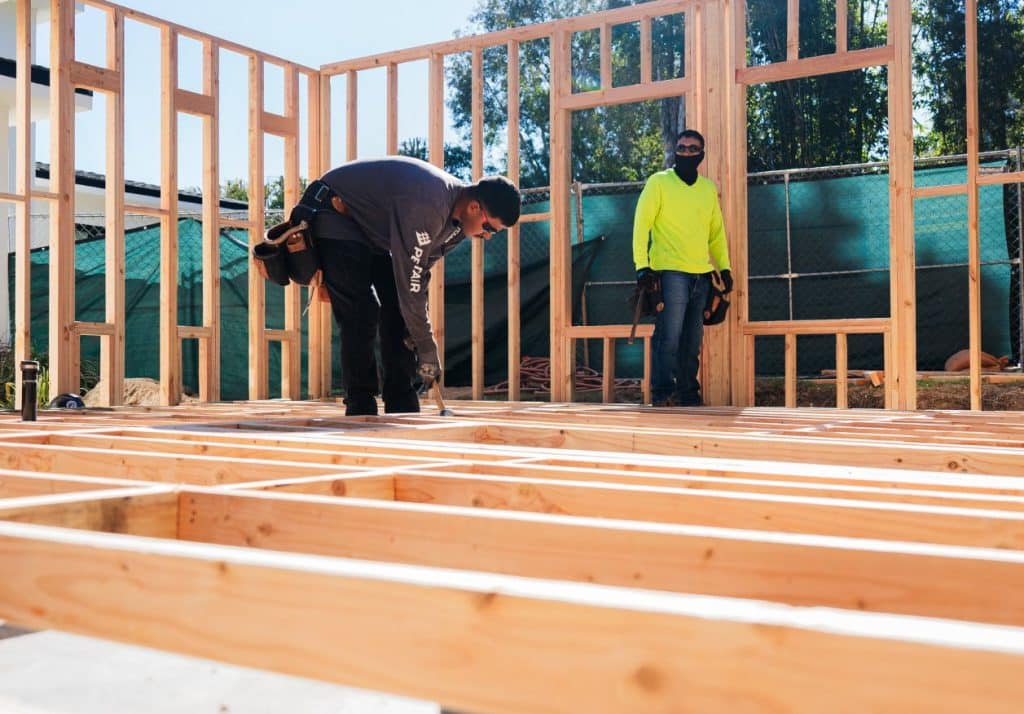
Finding a reliable contractor and understanding potential challenges can help keep your ADU project on budget, on time, and stress-free.
FAQs
The timeline for building an ADU can vary depending on factors such as the size and complexity of the project, local permitting processes, and site conditions. However, with Better Place Design & Build’s expertise and efficient project management, you can typically expect construction to take between twelve to eighteen months from design approval to completion.
The initial steps typically include a consultation with our team to discuss your vision, budget, and any specific requirements. We’ll assess the feasibility of the project, discuss zoning regulations and permits, and provide design recommendations tailored to your needs.
Begin by understanding local zoning and building regulations, deciding on the type of ADU you want (detached, attached, or garage conversion), and setting a realistic budget for the entire project.
The timeline can vary, but typically it ranges from 12 to 18 months from the initial planning phase to the final construction and inspection stages.
The process generally includes submitting detailed construction plans, undergoing several rounds of review by local planning departments, and addressing any required revisions to secure the necessary building permits.
Key costly components often include site preparation and foundation work, high-quality building materials, major utility upgrades, and professional fees for architects and contractors.
Hire experienced professionals such as architects and contractors who specialize in ADUs and are familiar with local regulations. Carefully plan and review all designs and constructions to adhere to all applicable standards.
Focus on efficient layouts with open floor plans, built-in storage solutions, and multi-functional spaces that cater to both aesthetics and functionality.
Explore options such as home equity loans, personal loans, or local government grants and incentives designed to encourage ADU development.
Look for contractors with ADU experience, a good track record, valid licensing, and positive reviews. Ensure they communicate well and offer transparent pricing.
Address any feedback from the building department, make necessary revisions to the plans, and resubmit. It’s common to go through multiple revisions before gaining approval.
After completing construction, schedule a final inspection with your local building department to ensure compliance with all regulations. Once approved, the department will issue a Certificate of Occupancy, confirming the ADU is safe and ready for habitation.

